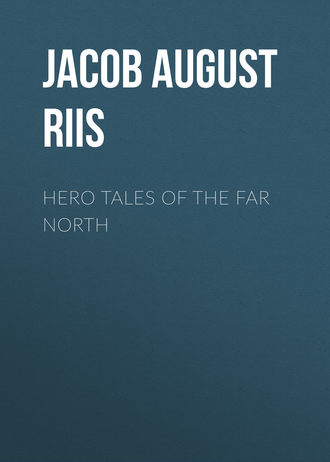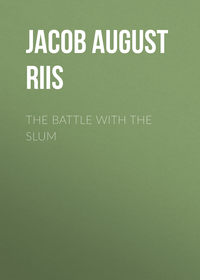 полная версия
полная версияHero Tales of the Far North
The sun shone fair upon the blue waters as the great fleet of thirty-odd fighting ships sailed up from the south. From the city's walls and towers a mighty multitude watched it come, unmindful of peril from shot and shell; the Danish line was not half a mile away. In the churches whose bells were still ringing when the first gun was fired from the block-ship Prövestenen, the old men and women prayed through the long day, for there were few homes in Copenhagen that did not have son, brother, or friend fighting out there. A single gun answered the challenge, now two and three at once, then broadside crashed upon broadside with deafening roar. When at length all was quiet a tremendous report shook the city. It was the flag-ship Dannebrog that blew up. She was on fire with only three serviceable guns left when she struck her colors, but no ship of her name might sail with an enemy's prize crew on board, and she did not.
The story of that bloody day has been told many times. Briton and Dane hoist their flags on April 2 with equal right, for never was challenge met with more dauntless valor. Lord Nelson owned that of all the hundred and five battles he had fought this was hottest. On the Monarch, which for hours was under the most galling fire from the Danish ships, two hundred and twenty of the crew were killed or wounded. "There was not a single man standing," wrote a young officer on board of her, "the whole way from the mainmast forward, a district containing eight guns a side, some of which were run out ready for firing, others lay dismounted, and others remained as they were after recoiling.... I hastened down the fore ladder to the lower deck and felt really relieved to find somebody alive." The slaughter on the Danish ships was even greater. More than one-fifth of their entire strength of a little over five thousand men were slain or wounded. Of the eighteen hulls they lost thirteen, but only one were the British able to take home with them. The rest were literally shot to pieces and were burned where they lay. As one after another was silenced, those yet alive on board spiked their last guns, if indeed there were any left worth the trouble, threw their powder overboard and made, for the shore. Twice the Danish Admiral abandoned his burning ship, the last time taking up his post in the island battery Tre Kroner. Each time one of the old hulls was crushed, a Briton pushed into the hole made in the line and raked the remaining ones fore and aft until their decks were like huge shambles. The block-ship Indfödsretten bore the concentrated fire of five frigates and two smaller vessels throughout most of the battle. Her chief was killed. When the news reached head-quarters on shore, Captain von Schrödersee, an old naval officer who had been retired because of ill health, volunteered to take his place. He was rowed out, but as he came over the side of the ship a cannon-ball cut him in two. Prövestenen, as it was the first to fire a shot, held out also to the last. One-fourth of her crew lay dead, and her flag had been shot away three times when the decks threatened to cave in and Captain Lassen spiked his last guns and left the wreck to be burned. All through the fight she was the target of ninety guns to which she could oppose only twenty-nine of her own sixty.
Nelson had promised Admiral Parker to finish the fight in an hour. When the battle had lasted three, Parker signalled to him to stop. Every school-boy knows the story of how Lord Nelson put the glass to his blind eye and, remarking that he could see no signal, kept right on. In the end he had to resort to stratagem to force a truce so that he might disentangle some of his ships that were drifting into great danger in the narrow channel. The ruse succeeded. Crown Prince Frederik, moved by compassion for the wounded whom Nelson threatened to burn with the captured hulks if firing did not stop, ordered hostilities to cease without consulting the Admiral of the fleet, and the battle was over. Denmark's honor was saved. "Nothing," wrote our own Captain Mahan, "could place a nation's warlike fame higher than did her great deeds that day." All else was lost; for "there had come upon Denmark one of those days of judgment to which nations are liable who neglect in time of peace to prepare for war." It had been long coming, but it had overtaken her at last and found all the bars down.
Alongside the Dannebrog throughout her fight with Nelson's flag-ship, and edging ever closer in under the Elephant's side until at last the marines were sent to man her rail and keep it away with their muskets, lay a floating battery mounting twenty guns under command of a beardless second lieutenant. The name of Peter Willemoes will live as long as the Danish tongue is spoken. Barely graduated from the Naval Academy, he was but eighteen when the need of officers thrust the command of "Floating Battery No. 1" upon him. So gallantly did he acquit himself that Nelson took notice of the young man who, every time a broadside crashed into his ship or overhead, swung his cocked hat and led his men in a lusty cheer. When after the battle he met the Crown Prince on shore, the English commander asked to be introduced to his youthful adversary. "You ought to make an admiral of him," he said, and Prince Frederik smiled: "If I were to make admirals of all my brave officers, I should have no captains or lieutenants left." When the Dannebrog drifted on the shoals, abandoned and burning, Willemoes cut his cables and got away under cover of the heavy smoke. Having neither sails nor oars, he was at the mercy of the tide, but luckily it carried him to the north of the Tre Kroner battery, and he reached port with forty-nine of his crew of one hundred and twenty-nine dead or wounded. The people received him as a conqueror returning with victory. His youth and splendid valor aroused the enthusiasm of the whole country. Wherever he went crowds flocked to see him as the hero of "Holy Thursday's Battle." Especially was he the young people's idol. Sailor that he was, he was "the friend of all pretty girls," sang the poet of that day. He danced and made merry with them, but the one of them all on whom his heart was set, so runs the story, would have none of him, and sent him away to foreign parts, a saddened lover.
Meanwhile much praise had not made him vain. "I did my duty," he wrote to his father, a minor government official in the city of Odense where four years later Hans Christian Andersen was born on the anniversary day of the battle, "and I have whole limbs which I least expected. The Crown Prince and the Admiral have said that I behaved well." He was to have one more opportunity of fighting his country's enemy, and this time to the death.
In the summer of 1807, England was advised that by the treaty of Tilsit Russia and Prussia had secretly joined Napoleon in his purpose of finally crushing his mortal enemy by uniting all the fleets of Europe against her, Denmark's too, by compulsion if persuasion failed. Without warning a British fleet swooped down upon the unsuspecting nation, busy with the pursuits of peace, bombarded and burned Copenhagen when the Commandant refused to deliver the ships into the hands of the robbers as a "pledge of peace," and carried away ships, supplies, even the carpenters' tools in the navy-yard. Nothing was spared. Seventy vessels, sixteen of them ships of the line, fell into their hands, and supplies that filled ninety-two transports beside. A single fighting ship was left to Denmark of all her fleet,—the Prince Christian Frederik of sixty-eight guns. She happened to be away in a Norwegian port and so escaped. Willemoes was on leave serving in the Russian navy, but hastened home when news came of the burning of Copenhagen, and found a berth under Captain Jessen.
On March 22, 1808, the Prince Christian, so she was popularly called, hunting a British frigate that was making Danish waters insecure, met in the Kattegat the Stately and the Nassau, each like herself of sixty-eight guns. The Nassau was the old Holsteen, renamed,—the single prize the victors had carried home from the battle of Copenhagen. Three British frigates were working up to join them. The coast of Seeland was near, but wind and tide cut off escape to the Sound. Captain Jessen ran his ship in close under the shore so that at the last he might beach her, and awaited the enemy there.
The sun had set, but the night was clear when the fight between the three ships began. With one on either side, hardly a pistol-shot away, Jessen returned shot for shot, giving as good as they sent, and with such success that at the end of an hour and a half the Britons dropped astern to make repairs. The Prince Christian drifted, helpless, with rudder shot to pieces, half a wreck, rigging all gone, and a number of her guns demolished. But when the enemy returned he was hailed with a cheer and a broadside, and the fight was on once more. This time they were three to one; one of the British frigates of forty-four guns had come up and joined in.
When the hull of the Prince Christian was literally knocked to pieces, and of her 576 men 69 lay dead and 137 wounded, including the chief and all of his officers who were yet alive, Captain Jessen determined as a last desperate chance to run one of his opponents down and board her with what remained of his crew. But his officers showed him that it was impossible; the ship could not be manoeuvred. There was a momentary lull in the fire and out of the night came a cry, "Strike your colors!" The Danish reply was a hurrah and a volley from all the standing guns. Three broad-sides crashed into the doomed ship in quick succession, and the battle was over. The Prince Christian stood upon the shore, a wreck.
Young Willemoes was spared the grief of seeing the last Danish man-of-war strike its flag. In the hottest of the fight, as he jumped upon a gun the better to locate the enemy in the gloom, a cannon-ball took off the top of his head. He fell into the arms of a fellow officer with the muttered words, "Oh God! my head—my country!" and was dead. In his report of the fight Captain Jessen wrote against his name: "Fell in battle—honored as he is missed." They made his grave on shore with the fallen sailors, and as the sea washed up other bodies they were buried with them.
The British captured the wreck, but they could only set fire to it after removing the wounded. In the night it blew up where it stood. That was the end of the last ship of Denmark's proud navy.
THE TROOPER WHO WON A WAR ALONE
Jens Kofoed was the name of a trooper who served in the disastrous war of Denmark against Sweden in Karl Gustav's day. He came from the island of Bornholm in the Baltic, where he tilled a farm in days of peace. When his troop went into winter quarters, he got a furlough to go home to receive the new baby that was expected about Christmas. Most of his comrades were going home for the holidays, and their captain made no objection. The Swedish king was fighting in far-off Poland, and no one dreamed that he would come over the ice with his army in the depth of winter to reckon with Denmark. So Jens Kofoed took ship with the promise that he would be back in two weeks. But they were to be two long weeks. They did not hear of him again for many moons, and then strange tidings came of his doings. Single-handed he had bearded the Swedish lion, and downed it in a fair fight—strangest of all, almost without bloodshed.
The winter storms blew hard, and it was Christmas eve when he made land, but he came in time to receive, not one new heir, but twin baby girls. Then there were six of them, counting Jens and his wife, and a merry Christmas they all had together. On Twelfth Night the little ones were christened, and then the trooper bethought himself of his promise to get back soon. The storms had ceased, but worse had befallen; the sea was frozen over as far as eye reached, and the island was cut off from all communication with the outer world. There was nothing for it but to wait. It proved the longest and hardest winter any one then living could remember. Easter was at hand before the ice broke up, and let a fishing smack slip over to Ystad, on the mainland. It came back with news that set the whole island wondering. Peace had been made, and Denmark had ceded all its ancient provinces east of the Öresund to Karl Gustav. Ystad itself and Skaane, the province in which Jens Kofoed had been campaigning, were Swedish now, and so was Bornholm. All unknown to its people, the island had changed hands in the game of war overnight, as it were. A Swedish garrison was coming over presently to take charge.
When Jens Kofoed heard it, he sat down and thought things over. If there was peace, his old captain had no use for him, that was certain; but there might be need of him at home. What would happen there, no one could tell. And there were the wife and children to take care of. The upshot of it all was that he stayed. Only, to be on the safe side, he got the Burgomaster and the Aldermen in his home town, Hasle, to set it down in writing that he could not have got back to his troop for all he might have tried. Kofoed, it will be seen, was a man with a head on his shoulders, which was well, for presently he had need of it.
There were no Danish soldiers in the island, only a peasant militia, ill-armed and untaught in the ways of war; so no one thought of resisting the change of masters. The people simply waited to see what would happen. Along in May a company of one hundred and twenty men with four guns landed, and took possession of Castle Hammershus, on the north shore, the only stronghold on the island, in the name of the Swedish king. Colonel Printzensköld, who had command, summoned the islanders to a meeting, and told them that he had come to be their governor. They were to obey him, and that was all. The people listened and said nothing.
Perhaps if the new rulers had been wise, things might have kept on so. The people would have tilled their farms, and paid their taxes, and Jens Kofoed, with all his hot hatred of the enemy he had fought, might never have been heard of outside his own island. But the Swedish soldiers had been through the Thirty Years' War and plunder had become their profession. They rioted in the towns, doubled the taxes, put an embargo on trade and export, crushed the industries; worse, they took the young men and sent them away to Karl Gustav's wars in foreign lands. They left only the old men and the boys, and these last they kept a watchful eye on for drafts in days to come. When the conscripts hid in the woods, so as not to be torn from their wives and sweethearts, they organized regular man-hunts as if the quarry were wild beasts, and, indeed, the poor fellows were not treated much better when caught.
All summer they did as they pleased; then came word that Karl Gustav had broken the peace he made, and of the siege of Copenhagen. The news made the people sit up and take notice. Their rightful sovereign had ceded the island to the Swedish king, that was one thing. But now that they were at war again, these strangers who persecuted them were the public enemy. It was time something were done. In Hasle there was a young parson with his heart in the right place, Poul Anker by name. Jens Kofoed sat in his church; he had been to the wars, and was fit to take command. Also, the two were friends. Presently a web of conspiracy spread quietly through the island, gripping priest and peasant, skipper and trader, alike. Its purpose was to rout out the Swedes. The Hasle trooper and parson were the leaders; but their secret was well kept. With the tidings that the Dutch fleet had forced its way through to Copenhagen with aid for the besieged, and had bottled the Swedish ships up in Landskrona, came a letter purporting to be from King Frederik himself, encouraging the people to rise. It was passed secretly from hand to hand by the underground route, and found the island ready for rebellion.
Governor Printzensköld had seen something brewing, but he was a fearless man, and despised the "peasant mob." However, he sent to Sweden for a troop of horsemen, the better to patrol the island and watch the people. Early in December, 1658, just a year after Jens Kofoed, the trooper, had set out for his home on furlough, the governor went to Rönne, the chief city in the island, to start off a ship for the reinforcements. The conspirators sought to waylay him at Hasle, where he stopped to give warning that all who had not paid the heavy war-tax would be sold out forthwith; but they were too late. Master Poul and Jens Kofoed rode after him, expecting to meet a band of their fellows on the way, but missed them. The parson stayed behind then to lay the fuse to the mine, while Kofoed kept on to town. By the time he got there he had been joined by four others, Aage Svendsön, Klavs Nielsen, Jens Laurssön, and Niels Gummelöse. The last two were town officers. As soon as the report went around Rönne that they had come, Burgomaster Klaus Kam went to them openly.
The governor had ridden to the house of the other burgomaster, Per Larssön, who was not in the plot. His horse was tied outside and he just sitting down to supper when Jens Kofoed and his band crowded into the room, and took him prisoner. They would have killed him there, but his host pleaded for his life. However, when they took him out in the street, Printzensköld thought he saw a chance to escape in the crowd and the darkness, and sprang for his horse. But his great size made him an easy mark. He was shot through the head as he ran. The man who shot him had loaded his pistol with a silver button torn from his vest. That was sure death to any goblin on whom neither lead nor steel would bite, and it killed the governor all right. The place is marked to this day in the pavement of the main street as the spot where fell the only tyrant who ever ruled the island against the people's will.
The die was cast now, and there was need of haste. Under cover of the night the little band rode through the island with the news, ringing the church bells far and near to call the people to arms. Many were up and waiting; Master Poul had roused them already. At Hammershus the Swedish garrison heard the clamor, and wondered what it meant. They found out when at sunrise an army of half the population thundered on the castle gates summoning them to surrender. Burgomaster Kam sat among them on the governor's horse, wearing his uniform, and shouted to the officers in command that unless they surrendered, he, the governor, would be killed, and his head sent in to his wife in the castle. The frightened woman's tears decided the day. The garrison surrendered, only to discover that they had been tricked. Jens Kofoed took command in the castle. The Swedish soldiers were set to doing chores for the farmers they had so lately harassed. The ship that was to have fetched reënforcements from Sweden was sent to Denmark instead, with the heartening news. They needed that kind there just then.
But the ex-trooper, now Commandant, knew that a day of reckoning was coming, and kept a sharp lookout. When the hostile ship Spes was reported steering in from the sea, the flag of Sweden flew from the peak of Hammershus, and nothing on land betrayed that there had been a change. As soon as she anchored, a boat went out with an invitation from the governor to any officers who might be on board, to come ashore and arrange for the landing of the troops. The captain of the ship and the major in charge came, and were made prisoners as soon as they had them where they could not be seen from the ship. It blew up to a storm, and the Spes was obliged to put to sea, but as soon as she returned boats were sent out to land the soldiers. They sent only little skiffs that could hold not over three or four, and as fast as they were landed they were overpowered and bound. Half of the company had been thus disposed of when the lieutenant on board grew suspicious, and sent word that without the express orders of the major no more would come. But Jens Kofoed's wit was equal to the emergency. The next boat brought an invitation to the lieutenant to come in and have breakfast with the officers, who would give him his orders there. He walked into the trap; but when he also failed to return, his men refused to follow. He had arranged to send them a sign, they said, that everything was all right. If it did not come, they would sail away to Sweden for help.
It took some little persuasion to make the lieutenant tell about the sign, but in the end Jens Kofoed got it. It turned out to be his pocket-knife. When they saw that, the rest came, and were put under lock and key with their fellows.
The ship was left. If that went back, all was lost. Happily both captain and mate were prisoners ashore. Four boat-loads of islanders, with arms carefully stowed under the seats, went out with the mate of the Spes, who was given to understand that if he as much as opened his mouth he would be a dead man. They boarded the ship, taking the crew by surprise. By night the last enemy was comfortably stowed, and the ship on her way to Rönne, where the prisoners were locked in the court-house cellar, with shotted guns guarding the door. Perhaps it was the cruelties practised by Swedish troops in Denmark that preyed upon the mind of Jens Kofoed when he sent the parson to prepare them for death then and there; but better counsel prevailed. They were allowed to live. The whole war cost only two lives, the governor's and that of a sentinel at the castle, who refused to surrender. The mate of the Spes and two of her crew contrived to escape after they had been taken to Copenhagen, and from them Karl Gustav had the first tidings of how he lost the island.
The captured ship sailed down to Copenhagen with greeting to King Frederik that the people of Bornholm had chosen him and his heirs forever to rule over them, on condition that their island was never to be separated from the Danish Crown. The king in his delight presented them with a fine silver cup, and made Jens Kofoed captain of the island, beside giving him a handsome estate. He lived thirty-three years after that, the patriarch of his people, and raised a large family of children. Not a few of his descendants are to-day living in the United States. In the home of one of them in Brooklyn, New York, is treasured a silver drinking cup which King Frederik gave to the ex-trooper; but it is not the one he sent back with his deputation. That one is still in the island of Bornholm.
CARL LINNÉ, KING OF THE FLOWERS
Years ago there grew on the Jonsboda farm in Småland, Sweden, a linden tree that was known far and wide for its great age and size. So beautiful and majestic was the tree, and so wide the reach of its spreading branches, that all the countryside called it sacred. Misfortune was sure to come if any one did it injury. So thought the people. It was not strange, then, that the farmer's boys, when they grew to be learned men and chose a name, should call themselves after the linden. The peasant folk had no family names in those days. Sven Carlsson was Sven, the son of Carl; and his son, if his given name were John, would be John Svensson. So it had always been. But when a man could make a name for himself out of the big dictionary, that was his right. The daughter of the Jonsboda farmer married; and her son played in the shadow of the old tree, and grew so fond of it that when he went out to preach he also called himself after it. Nils Ingemarsson was the name he received in baptism, and to that he added Linnæus, never dreaming that in doing it he handed down the name and the fame of the friend of his play hours to all coming days. But it was so; for Parson Nils' eldest son, Carl Linné, or Linnæus, became a great man who brought renown to his country and his people by telling them and all the world more than any one had ever known before about the trees and the flowers. The King knighted him for his services to science, and the people of every land united in acclaiming him the father of botany and the king of the flowers.
They were the first things he learned to love in his baby world. If he was cross, they had but to lay him on the grass in the garden and put a daisy in his hand, and he would croon happily over it for hours. He was four years old when his father took him to a wedding in the neighborhood. The men guests took a tramp over the farm, and in the twilight they sat and rested in the meadow, where the spring flowers grew. The minister began telling them stories about them; how they all had their own names and what powers for good or ill the apothecary found in the leaves and root of some of them. Carl's father, though barely out of college, was a bright and gifted man. One of his parishioners said once that they couldn't afford a whole parson, and so they took a young one; but if that was the way of it, the men of Stenbrohult made a better bargain than they knew. They sat about listening to his talk, but no one listened more closely than little Carl. After that he had thought for nothing else. In the corner of the garden he had a small plot of his own, and into it he planted all the wild flowers from the fields, and he asked many more questions about them than his father could answer. One day he came back with one whose name he had forgotten. The minister was busy with his sermon.









